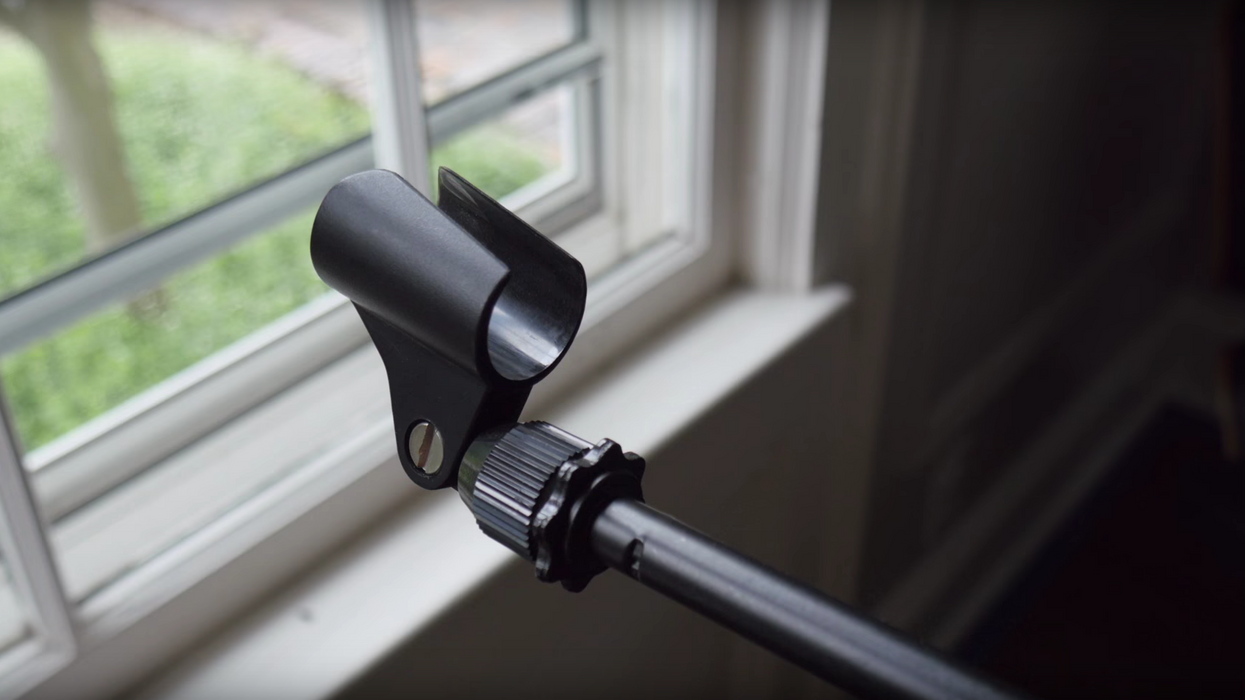Watch: 4 Alternative Uses for Mic Stands That Will Come in Handy on Set
Mic stands can do a whole lot more than hold microphones.

Typically if you're trying to mount lights or fly modifiers, a C-stand is the piece of equipment you look for. However, these things are expensive, heavy, and difficult to transport, so having another more affordable, less labor intensive option would make any filmmaker's life a little easier. Enter the mic stand. They're cheap, portable, and easy to set up on the fly, and in this video, Caleb Pike of DSLR Video Shooter shows you four alternative on-set uses for them, from holding diffusion to flying flags.
There's a reason that C-stands are the go-to piece of gear for lighting equipment. They're rugged, sturdy, and yes, heavy enough to handle big, bulky lights. However, if you're working with lighting equipment that doesn't weight very much, like LEDs and modifiers, mic stands are more than capable of handling the job.
Here are the four alternative uses for mic stands Pike mentions in the video:
- Hold lights
- Hold diffusion
- Hold a bounce card
- Hold microphones
Now, you'll need a couple of accessories to get going. First, you'll want to get your hands on a mic screw adapter (1/4"-20 male & 3/8"-16" male to 5/8"-27 female) so you'll be able to mount lights and other equipment. Next, you'll want to get some sandbags to weigh down the stand, especially since the legs are not particularly long. Once you have those two things, you're ready to go!
Keep in mind that a mic stand is probably not going to be able to handle a whole lot of weight, so if you try to mount a big, heavy light onto it you risk the whole thing tipping over and causing 1.) damage to your lighting unit and 2.) injury to your cast/crew. Sandbags will help with this, but just keep in mind that mic stands were made to carry relatively lightweight equipment (mics).
Source: DSLR Video Shooter











